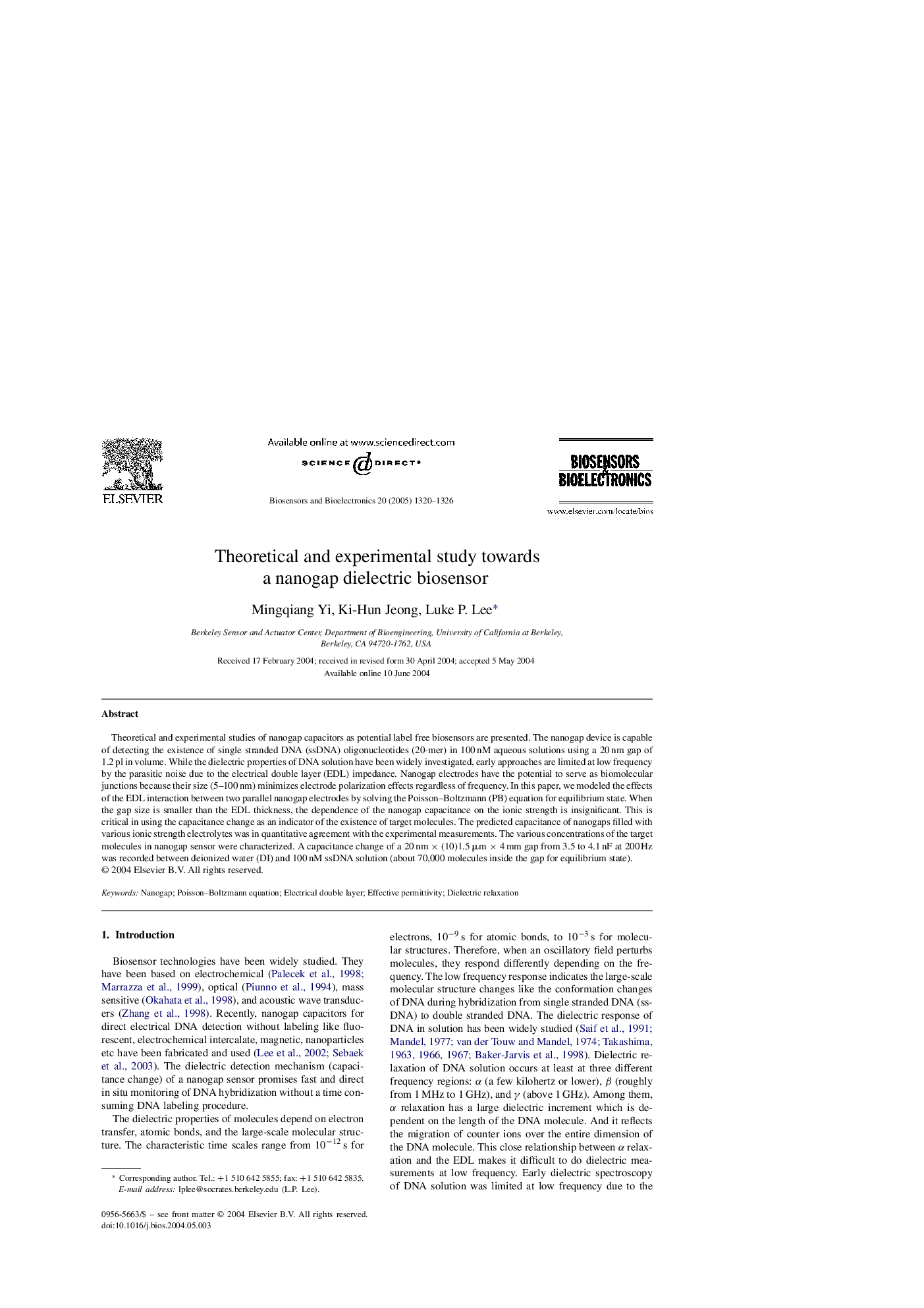| Article ID | Journal | Published Year | Pages | File Type |
|---|---|---|---|---|
| 10429949 | Biosensors and Bioelectronics | 2005 | 7 Pages |
Abstract
Theoretical and experimental studies of nanogap capacitors as potential label free biosensors are presented. The nanogap device is capable of detecting the existence of single stranded DNA (ssDNA) oligonucleotides (20-mer) in 100 nM aqueous solutions using a 20 nm gap of 1.2 pl in volume. While the dielectric properties of DNA solution have been widely investigated, early approaches are limited at low frequency by the parasitic noise due to the electrical double layer (EDL) impedance. Nanogap electrodes have the potential to serve as biomolecular junctions because their size (5-100 nm) minimizes electrode polarization effects regardless of frequency. In this paper, we modeled the effects of the EDL interaction between two parallel nanogap electrodes by solving the Poisson-Boltzmann (PB) equation for equilibrium state. When the gap size is smaller than the EDL thickness, the dependence of the nanogap capacitance on the ionic strength is insignificant. This is critical in using the capacitance change as an indicator of the existence of target molecules. The predicted capacitance of nanogaps filled with various ionic strength electrolytes was in quantitative agreement with the experimental measurements. The various concentrations of the target molecules in nanogap sensor were characterized. A capacitance change of a 20 nm à (10)1.5 μm à 4 mm gap from 3.5 to 4.1 nF at 200 Hz was recorded between deionized water (DI) and 100 nM ssDNA solution (about 70,000 molecules inside the gap for equilibrium state).
Keywords
Related Topics
Physical Sciences and Engineering
Chemistry
Analytical Chemistry
Authors
Mingqiang Yi, Ki-Hun Jeong, Luke P. Lee,
